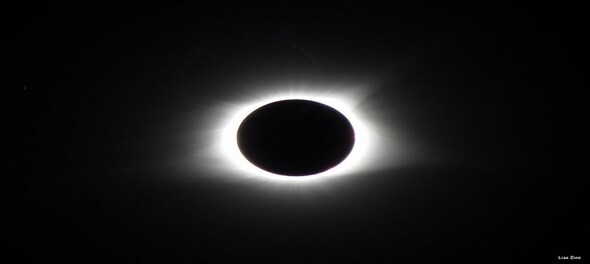
Coming April, a cosmic spectacle will unfold across the skies in the West that promises to captivate millions. As it passes in front of the Sun, the Moon will cast its shadow upon Earth, plunging parts of the United States, Canada, and Mexico into an ethereal darkness.
For the ones who witnessed the magnificent total solar eclipse in August 2017, memories of the Moon’s passage through the Sun and the Earth still linger, a fleeting moment when day turned to twilight, and the Sun’s fiery corona blazed forth. However, this year, the stage is set for something even more extraordinary.
According to NASA, the eclipse on April 8, 2024, could be “even more exciting due to differences in the path, timing, and scientific research.”
Let us delve into the nuances that set the 2024 total solar eclipse apart.
Wider path
The forthcoming total solar eclipse will have a somewhat larger path of totality than the eclipse in 2017, which allows spectators to witness the Moon completely block the Sun and display the corona, the star's outer atmosphere. The Moon's distance from Earth varies as it revolves around the Earth.
In 2017, the Moon was a bit farther away from the Earth compared to this year's total solar eclipse. Because of this, the path of that eclipse was a little skinnier. While the path ranged from about 62 to 71 miles wide in 2017, this time the path over North America is expected to be between 108 and 122 miles wide.
Also, the path of the total solar eclipse this year will pass over more cities and densely populated areas, making it easier for more people to see the totality. Compared with 12 million in 2017, around 31.6 million people live in the path of totality this time, while an additional 150 million people live within 200 miles of the path of totality.
Longer duration in totality
This year, the totality is expected to last longer than it did in 2017. It will last up to 4 minutes and 28 seconds, in the area about 25 minutes northwest of Torreon, Mexico. On the other hand, the longest period of totality was experienced near Carbondale, Illinois, at 2 minutes and 42 seconds in 2017.
In Texas, it will last for about 4 minutes and 26 seconds at the centre of the eclipse's path.
In parts of Canada, the total eclipse this year will last up to 3 minutes and 21 seconds.
“During any total solar eclipse, totality lasts the longest near the centre of the path, widthwise, and decreases toward the edge. But those seeking totality shouldn’t worry that they need to be exactly at the centre. The time in totality falls off pretty slowly until you get close to the edge,” read a statement by NASA.
Solar activity
In April, the Sun is expected to be in or near solar maximum, a position where the magnetic field is more like a tangled hairball. The Sun becomes more active during solar maximum.
This time, the streamers will likely be visible throughout the corona and viewers will have a better chance to see prominences – which appear as bright, pink curls or loops coming off the Sun, NASA stated.
(Edited by : Sudarsanan Mani)
Check out our in-depth Market Coverage, Business News & get real-time Stock Market Updates on CNBC-TV18. Also, Watch our channels CNBC-TV18, CNBC Awaaz and CNBC Bajar Live on-the-go!


Lok Sabha elections 2024: Baramati to Mainpuri, key battles in phase 3
Apr 30, 2024 7:01 PM
From Amethi to Mumbai South — Lok Sabha seats where parties are yet to announce candidates
Apr 30, 2024 6:39 PM
Diamond rings, fridge, TVs: Bhopal voters to get exciting prizes to boost turnout in Lok Sabha polls
Apr 30, 2024 6:35 PM
This Bihar district has its own app to help voters during Lok Sabha election
Apr 30, 2024 4:02 PM

